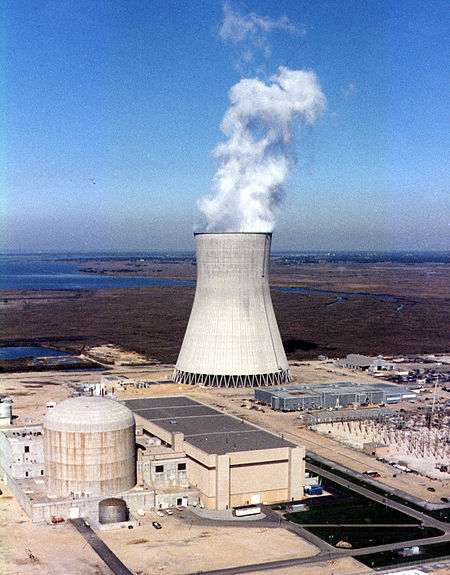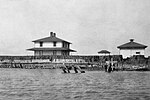Hope Creek Nuclear Generating Station

Hope Creek Nuclear Generating Station is a thermal nuclear power plant located in Lower Alloways Creek Township, in Salem County, New Jersey, United States, on the same site on Artificial Island as the two-unit Salem Nuclear Power Plant. The plant is owned and operated by PSEG Nuclear LLC. It has one unit (one reactor), a boiling water reactor (BWR) manufactured by GE. The complex was designed for two units, but the second unit was cancelled in 1981. It has a generating capacity of 1,268 MWe. The plant came online on July 25, 1986, licensed to operate until 2026. In 2009, PSEG applied for a 20-year license renewal, which it received in 2011 to operate until 2046. With its combined output of 3,572 megawatts, the Salem-Hope Creek complex is the largest nuclear generating facility in the Eastern United States and the second largest nationwide, after the Palo Verde Nuclear Generating Station in Arizona. Hope Creek is one of three licensed nuclear power reactors in New Jersey. The others are the two units at the adjacent Salem plant. As of January 1, 2005, New Jersey ranked 10th among the 31 states with nuclear capacity for total MWe generated. In 2003, nuclear plants generated over one-half of the electricity in the state.
Excerpt from the Wikipedia article Hope Creek Nuclear Generating Station (License: CC BY-SA 3.0, Authors, Images).Hope Creek Nuclear Generating Station
Alloway Creek Neck Road,
Geographical coordinates (GPS) Address Nearby Places Show on map
Geographical coordinates (GPS)
| Latitude | Longitude |
|---|---|
| N 39.467777777778 ° | E -75.538055555556 ° |
Address
Salem Nuclear Cooling Tower
Alloway Creek Neck Road
08038
New Jersey, United States
Open on Google Maps






